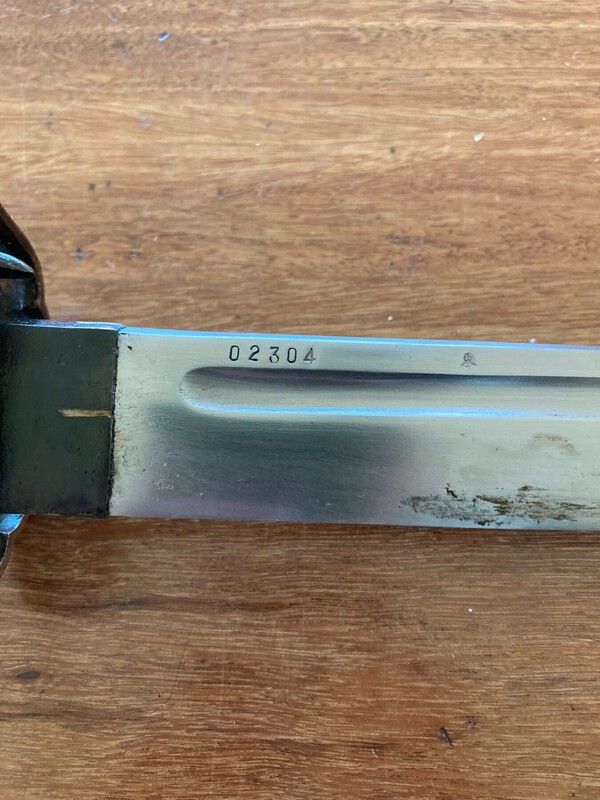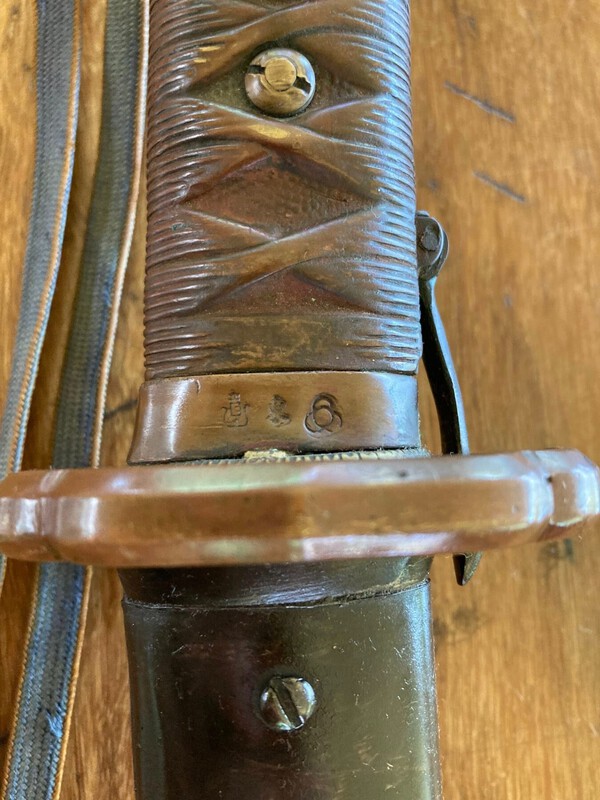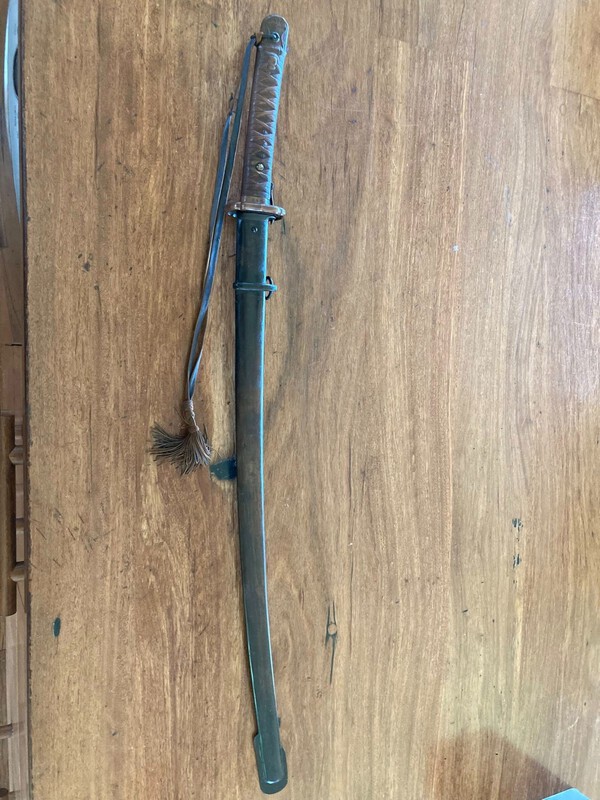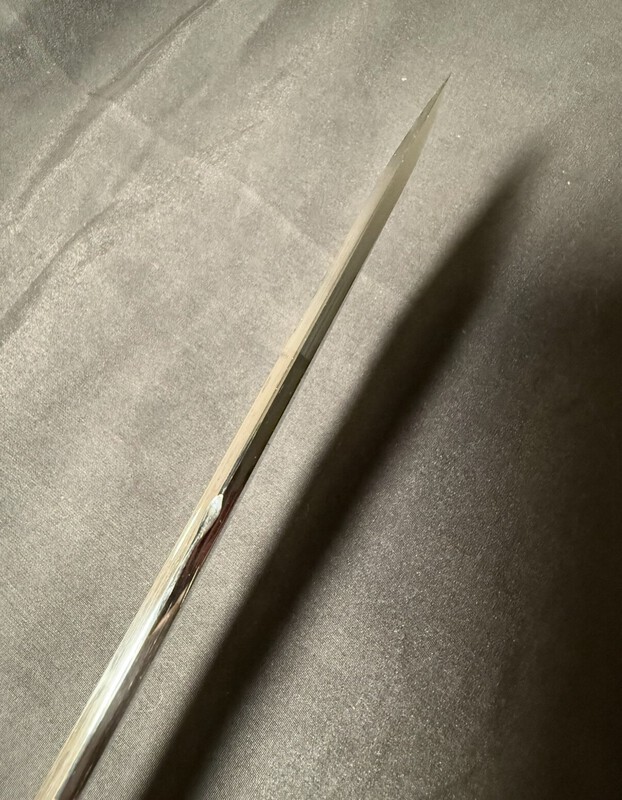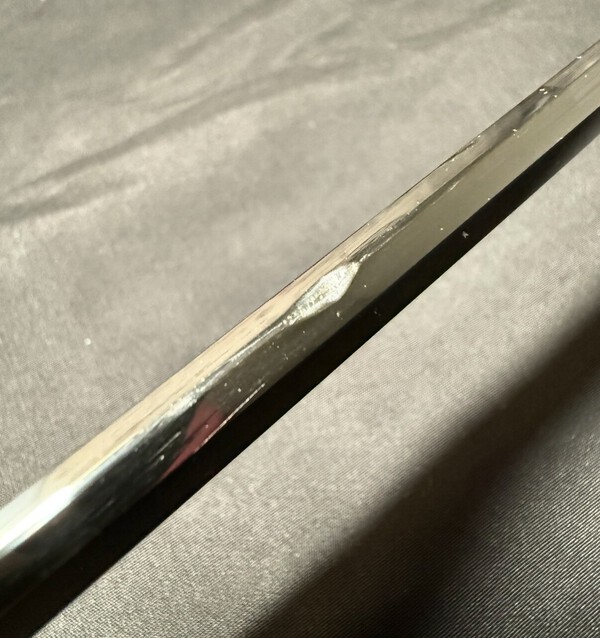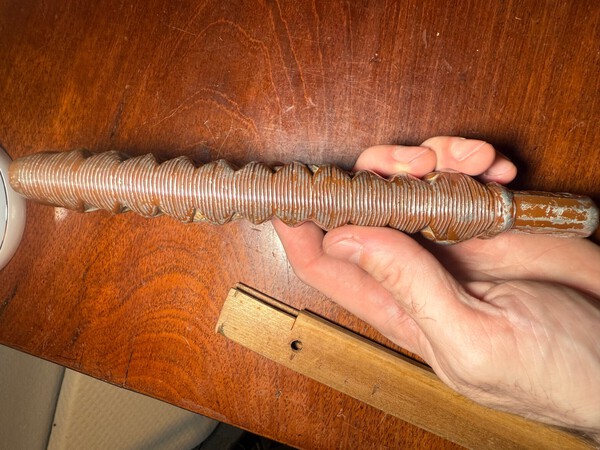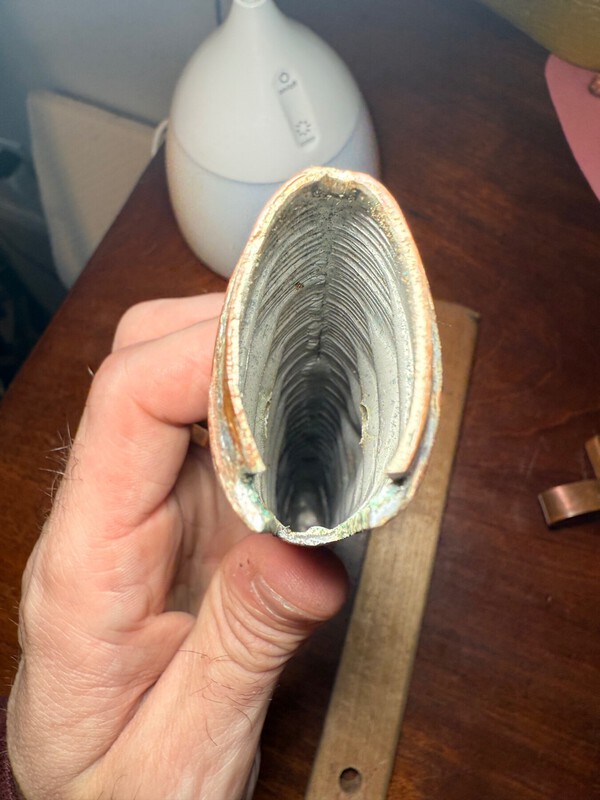-
Posts
1,653 -
Joined
-
Last visited
-
Days Won
15
Scogg last won the day on November 24
Scogg had the most liked content!
About Scogg

- Birthday 08/25/1989
Contact Methods
-
Website URL
https://www.pnwtokenkai.com/
Profile Information
-
Gender
Male
-
Location:
Oregon
-
Interests
Nihonto, Yamato and Yamashiro, Militaria, Type 95 NCO Shin-gunto, art, and Star Wars.
Profile Fields
-
Name
Sam S.
Recent Profile Visitors
18,578 profile views
Scogg's Achievements
-
My instinct leans toward Sue-Seki or Sue-Bizen. Both possibilities share characteristics with your blade, particularly the nakago and nakago-jiri (end of the nakago)
-
Hard to tell how large or small it is. I was thinking obidome, too. I once bought an item listed as an obidome that turned out to be a repurposed kashira https://www.militaria.co.za/nmb/topic/46031-shakudo-nanako-obidome/
-
Thank you so much Moriyama-san! Very much appreciated for the updated translation. Very interesting. When Ray helped me earlier with translation, he was working with much worse photos (my fault). Very cool for me to have a date on the polish. 1976 makes sense to me considering the state of Nihonto in Japan, as I understand it, in the 1950s versus the 1970s Sincerely, -Sam
-
Hi Dan, I think it’s a good idea. The collection of information is always a noble effort. Maybe such a catalog would help your heirs know what to do with them. It might even spark that interest in Japanese art for one of them in the future. I say, why not? Sincerely, -Sam
-
No. I have never seen a genuine Type 95 with a serial number that starts with zero. I do have many fake examples cataloged that start with a zero. The example in the photos below are an example of a well-done FAKE. This exact example has appeared on facebook 4 times now, from the same individual, over the last 6 weeks. Varying commenters falsely proclaim that it's legit. Unfortunately it's not real. -Sam
-
-
While I don’t have a time machine, and cannot confirm with certainty that these marks are battle damage. I suspect that at least one of them is kirikomi. At the very least, it is fun to think about. O-suriage mumei katana. -Sam
-
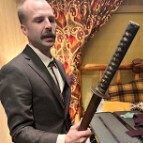
Please help me identify this sword
Scogg replied to TheTinkerBard's topic in Military Swords of Japan
Some collectors describe certain wartime mei as “chippy” because the strokes appear to be done quickly and lack precision. This can make them difficult to read and translate. Your sword is a good example of this type of signature, which is why matching the characters can be challenging. Best of luck, -Sam -
Good eye John! Thank you. I’ve been sitting here with a flashlight trying to get good photos. The seam is very hard to spot from the outside, but where you note, and on the inside, it is clearly a two piece construction
-
Hi @Kiipu, To my eyes, the wood insert appears to be one solid piece. Although, some splitting and scratching on the mune side gives me pause, and makes me second guess that judgement. The aluminum tsuka also appears to be one solid piece, with the only casting seams visible on the interior. If there is a tell-tale way to determine if it’s been cast as one, or joined, please let me know and I will check. I’d be happy to mail it to you if you’d like to check it out in-hand. -Sam Edit: Wood insert is a two piece construction
-
I was given this tsuka over the weekend. Just the tsuka and fuchi, no blade. I disassembled the barrel nuts and removed the wood insert. I thought I’d share here. It is not recommended to disassemble type 95 swords, so I figured this might be an interesting image for those of you who have wondered how it looks. This specific example has the four cannonball stamp, Nagoya 名 stamp, and Gifu 岐 stamp. -Sam
-

Sorry To Report
Scogg replied to Grey Doffin's topic in Sword Shows, Events, Community News and Legislation Issues
More of his photography can be found on his related Facebook page https://www.facebook.com/share/1DAqLdB2Cn/?mibextid=wwXIfr -
I was given this tsuba over the weekend along with some loose type 95 and 98 parts. It has the Gifu in Sakura stamp on one side, and a partial seki stamp on the other
-
@drb 1643, amazing! Thank you so much! Now I only need the one more example to complete my photo needs. Wooden handle with bohi. If I see one for sale anywhere, I will let you know. Thank you again! You’ve been a huge help. -Sam
-
Only two more variations and I should have all the photos that I need. Thanks everyone! Pattern# = Handle type - Tsuba type - Latch - Bohi - Ito - Saya - Kiipu variation number. *Pattern 3 variant blade without bohi (Suya) = Aluminum handle - Top Latch - Steel Tsuba - No Bohi - Symmetrical Ito. Metal Saya. variation 6.* Pattern 5 = Wooden handle - Steel Tsuba - Side Latch - With Bohi - Metal Saya with drag - (NA名). variation 7.









